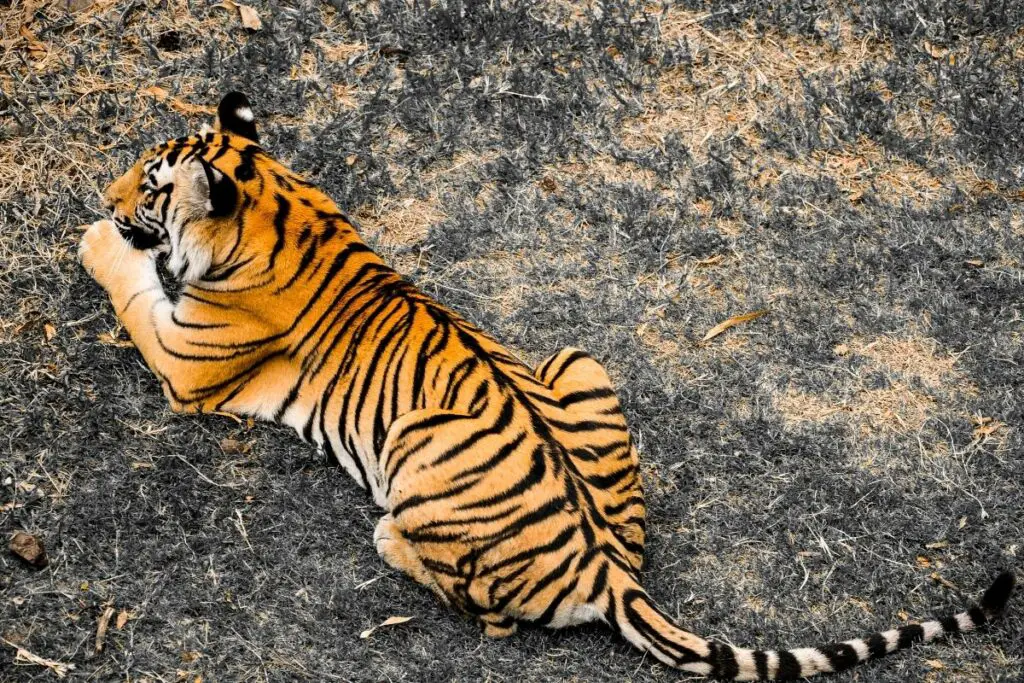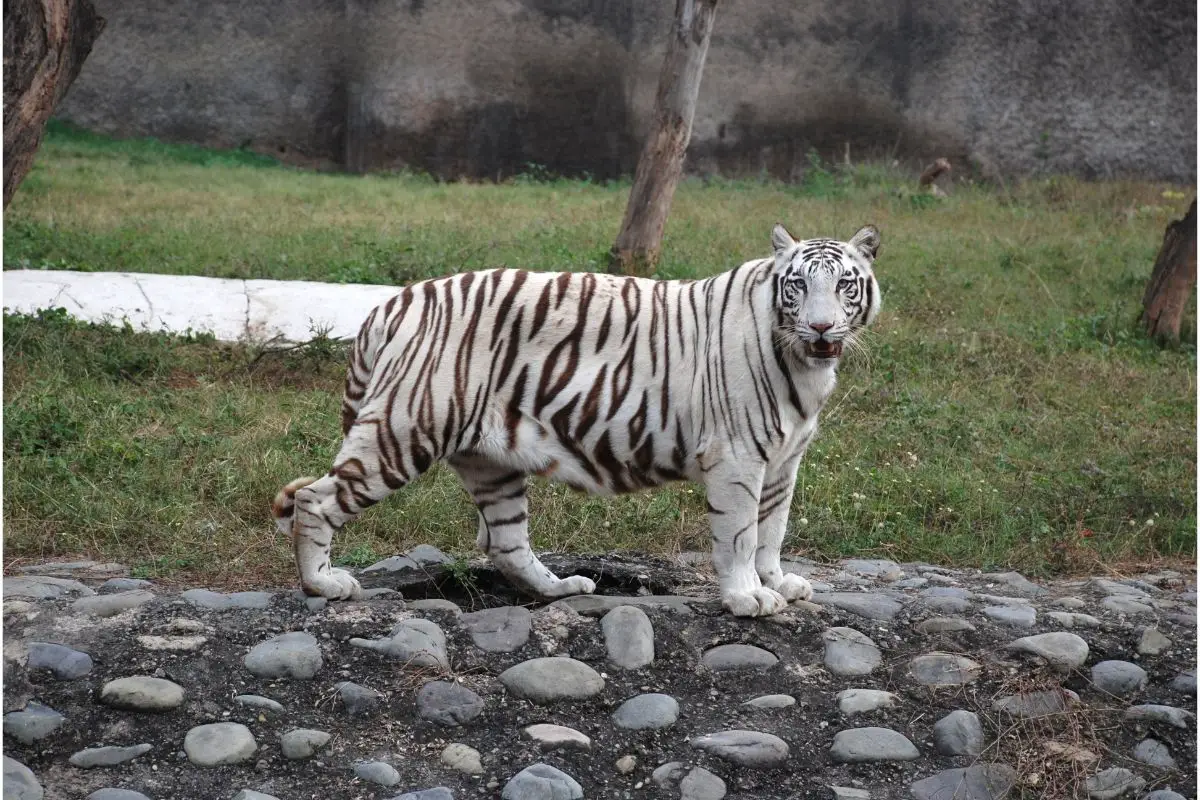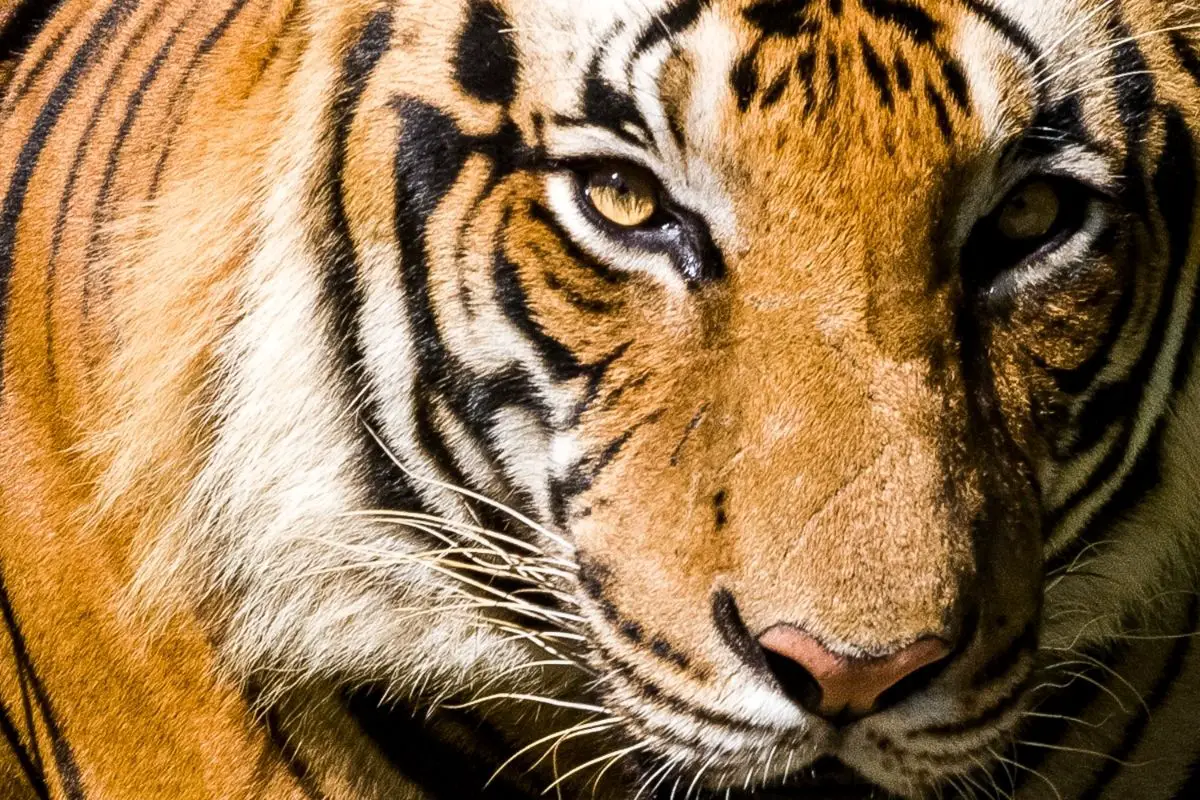Tigers are one of the most distinguishable species, known for their stripes and varying sizes and appearances.

There are many different species of the tiger but almost all of them have stripes stretched across their fur which makes it obvious that they are a part of the tiger family.
Here we look at the tiger’s fur in detail and also explore why tigers have stripes. If you want to learn more about a tiger’s stripes, keep reading!
Tigers Fur
Tigers have a very distinguishable appearance, they tend to be a deep orange-brown color with white fur on the face and underbelly and black stripes running from the tiger’s face down to the tail.
Appearances can vary between different species with larger species having thin, spread-out stripes and smaller species having thicker and darker stripes.
Some species are white with brown stripes and some are black with tan stripes but the most common species of tigers appear how people expect tigers to look.
Tigers have two layers of fur, they have an underfur that keeps them warm and an outer guard that protects them.
Some species all develop a winter coat where their coloring becomes paler, this is the case for species that live in colder climates. They then shed the winter coat when the climate becomes warmer again.
The Reason Why Tigers Have Stripes
Many people question why tigers have stripes and whether or not they serve a purpose? A tiger’s stripes are actually extremely important in helping tigers survive, hunt, and hide.
However, their stripes, the thing that makes tigers so special, is also one of the reasons behind the ever declining tiger population because throughout history tigers are poached and illegally hunted so greedy humans can sell their exquisite striped fur for a profit.
Poaching still happens today even though it is a recognized fact that in hundreds of years wild tigers could be a thing of the past.
Tigers Stripes As Camouflage
A tiger’s stripes enable them to be the incredible hunters that they are as their stripes enable them to blend into the background and pounce on unsuspecting prey.
At dusk or dawn, tigers are incredibly difficult to spot for other animals as they blend into the surrounding foliage.
Many animal coats have developed so that they can serve a purpose, and in the case of tiger stripes, it is camouflage. The preferred prey of tigers have limited vision and are easy to sneak up on and startle.
These animals include mostly hoofed animals such as zebras, antelope, and other such animals.
These animals have extremely weak vision at times of day when the light is low, such as dusk and dawn and the tiger’s bright fur appears as green to them, allowing the tiger to stay hidden.
It is the tiger’s stripes that break up the appearance of the tiger so that these animals can not make out the shape or size of the animal moving through the bushes.
The markings act as a disruptive coloration and make the tigers blend into any cover from tall grass to trees.
As tigers are solitary creatures they rely on their camouflaging abilities to survive as well as to successfully hunt.
White Tigers
Since the main purpose of the orange-colored tiger’s stripe is camouflage you may be questioning why a white tiger has stripes?
White tigers are not very common in the wild, they are actually a result of a genetic mutation in the Bengal tiger species and are not able to camouflage as well as their orange-colored relations.
This is why they do not survive in the wild and why this type of tiger is mostly seen in captivity where there are no threats to their survival other than humans.
Some people purposefully breed white Bengal tigers as they are seen as a tourist attraction and also sell for a lot of money.
Fun Facts About Tiger Stripes
Here are some interesting facts about tiger stripes, proving how unique and special these animals are!
Did you know that a tiger is born with all of the stripes he will ever have? As the tiger grows it does not develop any new stripes within its fur.
This is why tiger cubs seem to be covered in more stripes than adult tigers. As the cub begins to grow the stripes become more spaced out.
Tigers don’t just have stripes on their fur, they actually have stripes on their skin also and if you were to see a shaved tiger you would still be able to identify it as a part of this wonderful species.
The striped markings on a tiger’s skin also follow the exact same pattern as the stripes on the fur.
Tiger’s being born with no stripes is not a naturally occurring thing, only being possible within one species, and is a direct result of humans interfering with the breeding process.
In a zoological park in India, a black tiger cub was born but this would never be seen in the wild as species tend to mate within their own and cross-breeding is not common.
As mentioned above, there is only one breed that has one in 10,000 births that can result in a stripeless tiger, and this can happen in the Bengal tiger subspecies. These rare cubs are born with no stripes and pure white fur.
This is a result of the presence of a double recessive allele in the genetic code of the cub.
Our last fun fact about tiger stripes is that tigers typically have over 100 stripes! Each stripe is unique and is similar to a human’s fingerprint, no two are the same.
Final Thoughts
Who knew how important a tiger’s stripes were? Without their stripes, tigers would not survive in the wild or be able to camouflage themselves so well.
Each year more subspecies of tigers are listed as critically endangered and so it is important that we take the time to learn about these magnificent creatures before it’s too late.
- Sink Your Teeth Into This: Analyzing the Powerful Lion Bite Force - September 8, 2023
- Siberian Tigers: Everything You Need To Know - September 4, 2023
- Do Lions Eat Humans? Understanding Lion Aggression and Risks - September 4, 2023








